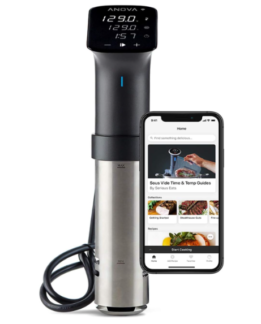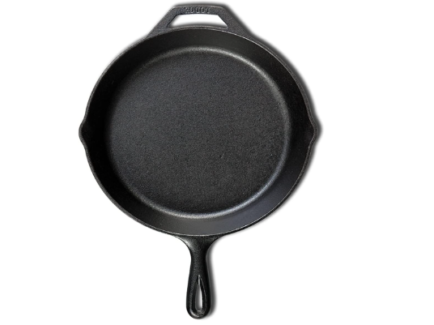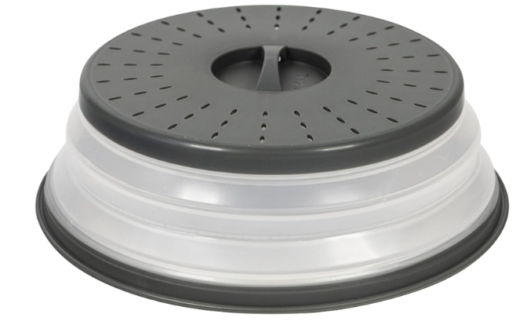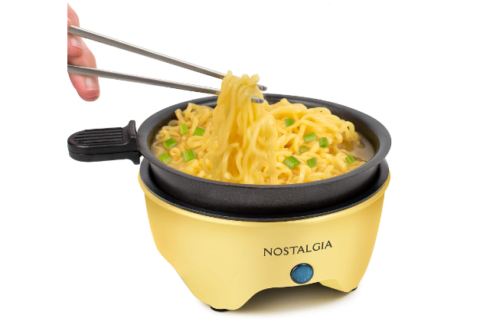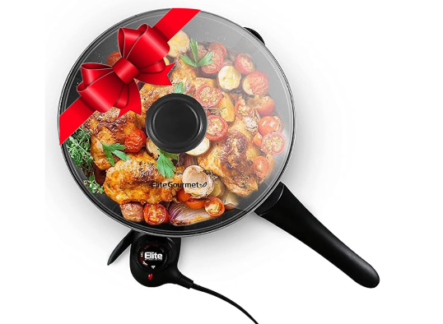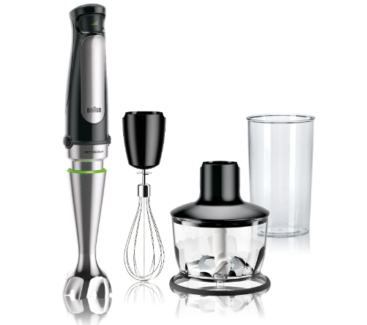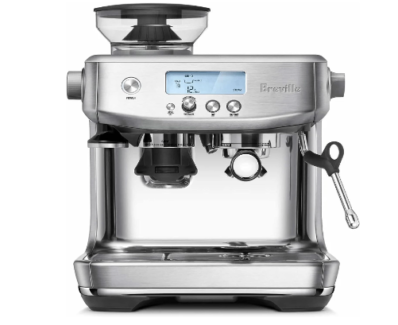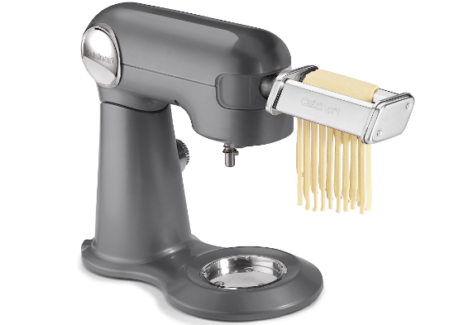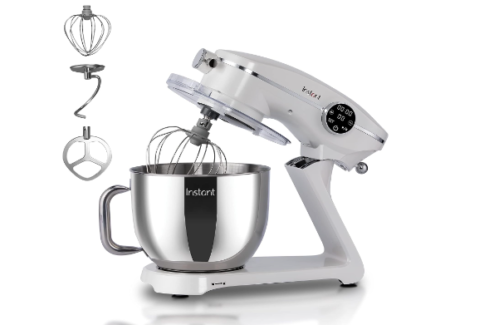German knives are renowned for their high-quality craftsmanship and precision....
Read More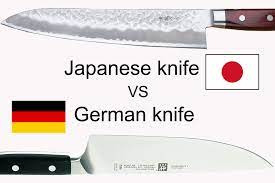
Japanese and German knives are two popular styles of kitchen knives known for their exceptional craftsmanship and unique characteristics. Each style has its own distinct features and is favored by chefs and cooking enthusiasts around the world. Here’s a short introduction to Japanese and German knives:
Japanese Knives: Japanese knives are renowned for their sharpness, precision, and attention to detail. They are typically made with high-carbon steel, which allows for a finer edge and excellent cutting performance. The blade of a Japanese knife is usually thinner and lighter compared to its German counterpart, making it highly maneuverable and suitable for intricate tasks like precision slicing and dicing. Traditional Japanese knife-making techniques, such as the art of forging and the use of different types of steel, contribute to the exceptional quality and durability of these knives. Popular types of Japanese knives include the santoku, gyuto (chef’s knife), and nakiri (vegetable knife).
German Knives: German knives are renowned for their robustness, durability, and versatility. They are typically made with softer stainless steel, which makes them less prone to chipping and easier to maintain. German knife blades are usually thicker and heavier compared to Japanese knives, providing stability and heft for tasks that require more force, such as chopping through bones or tougher ingredients. The blades often have a more curved shape, which facilitates a rocking motion while cutting. German knives are known for their excellent balance and ergonomic handles, making them comfortable to use for extended periods. The most well-known German knife style is the classic chef’s knife or “chef’s blade.”
Both Japanese and German knives have their strengths and are suitable for different cooking styles and preferences. Japanese knives excel in precision cutting and delicate tasks, while German knives offer durability and versatility for heavier-duty work. Ultimately, the choice between these two styles depends on personal preference, the type of cooking you do, and the tasks you frequently undertake in the kitchen.
Who is favorite Germany vs Japan knives?
There is no definitive answer to who is the favorite between German and Japanese knives, as it ultimately depends on individual preferences, cooking style, and specific needs. Chefs and home cooks worldwide have varying opinions and preferences when it comes to choosing between German and Japanese knives.
German knives, such as those produced by renowned brands like Wusthof and Zwilling J.A. Henckels, have a long-standing reputation for their quality, durability, and versatility. They are widely used and appreciated by many chefs, particularly those who work with Western-style cuisine or prefer a knife with a slightly heavier weight and sturdy construction.
Japanese knives, on the other hand, have gained significant popularity in recent years due to their exceptional sharpness, precision, and craftsmanship. Brands like Shun, Global, and Miyabi are well-known for producing high-quality Japanese knives that are favored by chefs specializing in Japanese cuisine and those who value the precision and delicate cutting performance of Japanese knives.
It’s important to note that personal preferences and opinions vary widely among chefs and home cooks. Some may prefer the durability and versatility of German knives, while others may lean towards the sharpness and precision of Japanese knives. Ultimately, the “favorite” knife brand or style varies from person to person, and it’s recommended to try out different knives and see which one aligns best with your cooking needs and preferences.
What is the difference between German and Japanese knives?
There are several key differences between German and Japanese knives, including the following:
- Blade Design: German knives typically have a thicker and heavier blade compared to Japanese knives. German knives often feature a more curved shape, which facilitates a rocking motion during cutting. Japanese knives, on the other hand, tend to have a thinner and lighter blade, allowing for precise and intricate cuts.
- Steel Type: German knives are commonly made with softer stainless steel, which offers durability and resistance to corrosion. Japanese knives, on the other hand, often use high-carbon steel, which allows for a sharper edge and excellent cutting performance. Japanese knives made with high-carbon steel may require more care and maintenance to prevent corrosion.
- Blade Hardness: Japanese knives are known for their higher blade hardness compared to German knives. Japanese knives typically have a higher Rockwell hardness rating (typically ranging from 58 to 65 HRC), which allows them to maintain a sharp edge for longer periods. German knives generally have a lower hardness rating (typically ranging from 55 to 58 HRC), providing more durability and resistance to chipping.
- Cutting Technique: German knives are well-suited for tasks that require more force, such as chopping through bones or denser ingredients. The curved blade shape of German knives allows for efficient rocking motions during cutting. Japanese knives excel in precision cutting tasks, such as precise slicing, dicing, and intricate vegetable work. Their thin and sharp blades enable more delicate and precise cuts.
- Weight and Balance: Japanese knives are often lighter and more balanced towards the blade, providing better control and maneuverability. German knives are generally slightly heavier, with a balance that is closer to the handle, offering stability and leverage during cutting.
- Price: In general, Japanese knives tend to be more expensive compared to German knives. The higher cost is often attributed to the craftsmanship, high-quality materials, and specialized techniques involved in making Japanese knives.
It’s important to note that these differences are generalizations, and there are variations within each style of knife. Additionally, individual brands and models within both German and Japanese knives may have unique characteristics and features. Ultimately, the choice between German and Japanese knives depends on personal preferences, cooking style, and specific needs in the kitchen.
Do chefs prefer Japanese or German knives?
Chefs’ preferences for Japanese or German knives can vary based on individual tastes, cooking styles, and the specific tasks they perform in the kitchen. However, it is worth noting that both Japanese and German knives have a strong presence in professional kitchens and are favored by chefs for different reasons.
Japanese knives are highly regarded for their exceptional sharpness, precision, and ability to make clean, precise cuts. They are often favored by chefs who specialize in Japanese cuisine or those who prioritize intricate and delicate tasks such as precision slicing, fine dicing, and intricate vegetable work. The lightweight and agile nature of Japanese knives also make them popular among chefs who require speed and nimbleness in their cutting techniques.
On the other hand, German knives are renowned for their durability, versatility, and sturdiness. They excel in tasks that require more force, such as chopping through bones, tougher ingredients, or heavy-duty cutting. The heft and thicker blades of German knives provide stability and leverage, making them well-suited for tasks like breaking down large cuts of meat or tackling dense vegetables. The ergonomic handles of German knives also contribute to their popularity among chefs who spend long hours in the kitchen.
In reality, many professional chefs maintain a diverse collection of knives, including both Japanese and German styles, to cater to various cooking needs. They often select knives based on the specific task at hand, the ingredients they work with, and their personal preferences. Ultimately, the choice between Japanese and German knives comes down to individual preference, the type of cuisine being prepared, and the specific requirements of the chef’s work.
Is Japanese or German steel better?
The question of whether Japanese or German steel is better is subjective and depends on various factors and personal preferences. Both Japanese and German knives are crafted using different types of steel, each with its own unique characteristics.
Japanese steel is often made with high-carbon steel, which allows for a finer and sharper edge. The higher carbon content contributes to the exceptional sharpness and edge retention of Japanese knives. Japanese knife-making techniques, such as traditional forging methods and the use of multiple layers of steel, enhance the overall quality and durability of the blades. Japanese steel is known for its ability to achieve razor-sharp edges and its excellent performance in precision cutting tasks.
German steel, on the other hand, is typically made with softer stainless steel. While it may not achieve the same level of sharpness as Japanese steel, German knives offer other advantages. The softer steel used in German knives makes them more resistant to chipping and easier to maintain. German knives are often more durable and suitable for heavy-duty tasks that require more force, such as chopping through bones or dense ingredients. They are also known for their excellent balance and stability.
It’s important to note that advancements in steel manufacturing and knife-making techniques have led to a broader range of options and variations within both Japanese and German knives. Some Japanese knives may incorporate elements of stainless steel to improve corrosion resistance, while German knives may utilize higher-quality steel for improved sharpness and edge retention. Ultimately, the quality and performance of a knife depend not just on the type of steel used but also on factors such as the craftsmanship, heat treatment, and overall design.
When choosing between Japanese and German steel, it’s best to consider your own cooking style, the tasks you frequently undertake in the kitchen, and your personal preferences regarding sharpness, durability, and maintenance. It’s worth noting that both Japanese and German knives have their loyal followings and are highly respected in the culinary world.
Are Japanese or German knives harder?
Japanese and German knives differ in terms of the hardness of their blades, with Japanese knives generally known for their higher hardness compared to German knives.
Japanese knives are often made with high-carbon steel, which allows for a harder blade. The hardness of Japanese knives typically ranges between 58 to 65 HRC (Rockwell hardness scale). Higher hardness means that the blade can maintain a sharp edge for longer periods and is less prone to dulling. However, it also makes the blade more susceptible to chipping or breaking if subjected to excessive force or used improperly.
German knives, on the other hand, are typically made with softer stainless steel, which results in a lower hardness rating. German knife blades typically fall within the range of 55 to 58 HRC. The softer steel provides more durability and resilience, making German knives less prone to chipping and more forgiving when encountering tough or dense ingredients. However, the trade-off is that the blade may require more frequent sharpening to maintain its optimal cutting performance.
It’s important to note that the hardness of a knife blade is just one aspect to consider when evaluating its overall quality and performance. Factors such as the design, geometry, heat treatment, and craftsmanship also play significant roles in determining a knife’s performance, sharpness, and longevity.
When choosing between Japanese and German knives, it’s crucial to consider your specific needs, preferences, and the tasks you commonly perform in the kitchen. If you prioritize extreme sharpness and precision cutting, Japanese knives with their higher hardness may be a better fit. If durability and resilience for heavier tasks are more important, German knives with their slightly softer blades might be a suitable choice.
Which is better German or Japanese?
Determining whether German or Japanese knives are better is subjective and depends on individual preferences, cooking style, and specific needs. Both German and Japanese knives have their own strengths and excel in different areas. Here are some key factors to consider:
- Sharpness and Precision: Japanese knives are renowned for their exceptional sharpness and precision. They typically have thinner blades and can achieve razor-sharp edges, making them ideal for tasks that require fine, delicate cuts and intricate techniques.
- Durability and Versatility: German knives are known for their durability and versatility. They are generally made with softer stainless steel, which makes them more resistant to chipping and easier to maintain. German knives excel in heavy-duty tasks like chopping through bones and tough ingredients, and they offer stability and heft that can be advantageous for tasks requiring more force.
- Weight and Balance: Japanese knives are often lighter and have a more nimble feel, which can be desirable for chefs who prioritize speed and precision. German knives tend to have a slightly heavier weight, which can provide a better sense of control and stability during cutting.
- Cutting Style and Cuisine: The choice between German and Japanese knives can also be influenced by the style of cuisine you cook. Japanese knives are well-suited for Japanese cuisine and tasks like slicing sashimi or preparing delicate vegetables. German knives are commonly used in Western-style cooking and can handle a wide range of tasks, including meat and vegetable preparation.
Ultimately, the best choice between German and Japanese knives depends on your personal preferences, the type of cooking you do, and the specific tasks you frequently undertake. Some chefs prefer to have a mix of both German and Japanese knives in their kitchen, utilizing each style for its particular strengths. It’s recommended to try out different knives, if possible, to get a feel for their handling and performance before making a decision.
Japanese vs German knives: Which brand is best?
Determining the best brand of Japanese or German knives is subjective and depends on individual preferences, needs, and budget. Both Japan and Germany have a rich history of knife-making, and there are numerous reputable brands from each country. Some well-known brands for Japanese knives include Shun, Global, Miyabi, and Masamoto. In the case of German knives, popular brands include Wusthof, Zwilling J.A. Henckels, Messermeister, and Victorinox.
The best brand for you will depend on factors such as the specific knife type you are looking for, the level of craftsmanship and materials you desire, your budget, and your personal preferences in terms of design and performance. It’s essential to consider factors like blade quality, handle comfort, reputation, customer reviews, and warranty or customer support when evaluating different brands.
To determine the best brand for your needs, it’s recommended to research and read reviews about the specific knife models and brands you are interested in. You may also want to visit a specialty knife store or kitchenware retailer to handle different knives and get a feel for their quality and ergonomics.
Ultimately, the best brand is the one that offers the knife that meets your requirements in terms of performance, durability, comfort, and value for money. It’s always a good idea to invest in knives from reputable brands with a track record of producing high-quality products.
What is pros and cons of German knives?
German knives have several advantages and considerations to keep in mind, which can be summarized as follows:
Pros of German knives:
- Durability: German knives are known for their exceptional durability and sturdiness. They are designed to withstand heavy-duty tasks and can handle tough ingredients and bone with ease.
- Versatility: German knives are highly versatile and suitable for a wide range of tasks in the kitchen. They can handle various cutting techniques, including chopping, slicing, and dicing, making them suitable for both meat and vegetables.
- Weight and Balance: German knives are typically slightly heavier compared to Japanese knives. This weight provides stability and helps with tasks that require more force or downward pressure.
- Rocking Motion: The curved blade design of German knives allows for efficient rocking motions during cutting. This motion is particularly useful for tasks like mincing and chopping.
- Forgiveness: German knives made with softer stainless steel are less prone to chipping and more forgiving when encountering tough or dense ingredients. They require less maintenance and are easier to sharpen compared to harder steel.
Cons of German knives:
- Sharpness: German knives generally have a lower blade hardness compared to Japanese knives. While they are still sharp, they may not achieve the same razor-sharp edge as Japanese knives. They may require more frequent sharpening to maintain optimal cutting performance.
- Precision: The thicker blade design of German knives makes them less suitable for precision cutting tasks that require fine and delicate cuts. They may not provide the same level of precision as Japanese knives.
- Weight: The weight that provides stability and leverage can be a disadvantage for those who prefer a lighter and more nimble knife. It may lead to fatigue during prolonged use or for individuals who have specific preferences for lighter knives.
It’s important to note that these pros and cons are general characteristics of German knives and may vary depending on the specific brand, model, and individual preferences. Ultimately, the choice of knife style depends on your cooking style, specific needs, and personal preferences in the kitchen.
What is pros and cons of Japanese knives?
Japanese knives offer several advantages and considerations to keep in mind, which can be summarized as follows:
Pros of Japanese knives:
- Sharpness and Precision: Japanese knives are renowned for their exceptional sharpness and precision. They can achieve razor-sharp edges, making them excellent for tasks that require fine, delicate cuts and intricate techniques.
- Lightweight and Maneuverability: Japanese knives are typically lighter and have a more nimble feel compared to German knives. The lightweight design allows for better control and maneuverability, making them ideal for tasks that require speed and precision.
- Thin and Fine Blades: Japanese knives have thinner and finer blades compared to German knives. This allows for more precise and clean cuts, making them well-suited for tasks like slicing sashimi, intricate vegetable work, and precision cutting techniques.
- Blade Hardness: Japanese knives often have higher blade hardness, allowing them to maintain a sharp edge for longer periods. This reduces the need for frequent sharpening and ensures excellent cutting performance.
- Aesthetics: Japanese knives are often admired for their elegant and artistic designs. Many Japanese knife makers take pride in the craftsmanship and aesthetics of their blades, making them a visually appealing choice for many.
Cons of Japanese knives:
- Blade Fragility: Japanese knives made with high-carbon steel can be more prone to chipping and damage if not used and cared for properly. They require more careful handling and maintenance to prevent corrosion and maintain their sharpness.
- Specialized Use: The thin and delicate nature of Japanese knives makes them more suitable for specific tasks and ingredients. They may not be ideal for heavy-duty tasks that require more force or cutting through bones.
- Price: Japanese knives, especially those made by renowned artisans, can be more expensive compared to German knives. The higher cost is often attributed to the craftsmanship, high-quality materials, and specialized techniques involved in making Japanese knives.
It’s important to note that these pros and cons are general characteristics of Japanese knives and may vary depending on the specific brand, model, and individual preferences. Ultimately, the choice of knife style depends on your cooking style, specific needs, and personal preferences in the kitchen.
Japanese vs German knives - How to use
Using Japanese and German knives effectively involves understanding their design, handling them with care, and employing proper cutting techniques. Here are some general guidelines for using each type of knife:
Japanese Knives:
- Grip: Hold the handle of the Japanese knife with a firm but relaxed grip. Make sure your hand is positioned towards the blade’s end for better control and balance.
- Cutting Techniques: Japanese knives excel at precise and delicate cutting techniques. Use a pinch grip, where your thumb and forefinger hold the blade near the bolster, for better control. Employ slicing, push cutting, or pulling back techniques for clean and precise cuts.
- Blade Motion: Japanese knives are often used with a rocking or gliding motion, allowing the sharp edge to smoothly cut through ingredients. This motion is particularly useful for tasks like mincing or chopping vegetables.
- Cutting Surfaces: Use a suitable cutting surface such as a wooden or plastic cutting board to protect the knife’s edge and maintain its sharpness. Avoid cutting on hard surfaces like glass or stone, as it can damage the blade.
German Knives:
- Grip: Hold the handle of the German knife with a secure grip, ensuring your hand is positioned towards the bolster for better balance. The bolster, which is the thick area where the blade meets the handle, provides stability and support.
- Cutting Techniques: German knives are versatile and suitable for various cutting techniques. Use a full grip on the handle, with your thumb resting on the spine of the blade, for more forceful tasks like chopping or cutting through bones.
- Rocking Motion: German knives are often used with a rocking motion, where you move the knife’s curved blade up and down to chop or mince ingredients. The bolster provides leverage and control during this motion.
- Cutting Surfaces: Like with Japanese knives, use a suitable cutting surface such as a wooden or plastic cutting board to protect the blade and avoid cutting on hard surfaces.
Regardless of the knife type, always prioritize safety and proper handling. Avoid excessive force, twisting the blade, or using the wrong knife for a specific task. It’s also essential to keep your knives sharp and properly maintained, as dull or damaged blades can be more challenging to use effectively and may increase the risk of accidents.
Practice and familiarity with your specific knife will also contribute to better knife skills and efficiency in the kitchen. Consider taking a knife skills class or watching instructional videos to improve your technique and get the most out of your Japanese or German knife.
Japanese vs erman knives - Cleaning
When it comes to cleaning Japanese and German knives, there are a few key considerations to keep in mind. Here are some general guidelines:
Japanese Knives:
- Hand Wash: It is recommended to hand wash Japanese knives rather than placing them in a dishwasher. Harsh detergents, high temperatures, and abrasive movements in dishwashers can damage the blade’s edge and handle materials.
- Gentle Cleaning: Clean the knife with a mild dishwashing soap and warm water immediately after use. Avoid using abrasive sponges or scouring pads that could scratch the blade.
- Drying: After washing, dry the knife thoroughly with a clean towel to prevent moisture buildup and potential corrosion.
- Storage: Store Japanese knives in a knife block, sheath, or on a magnetic strip to protect the blade and maintain its sharpness.
German Knives:
- Hand Wash: Similar to Japanese knives, it is generally recommended to hand wash German knives. Avoid exposing them to harsh dishwasher conditions.
- Cleaning: Clean the knife with a mild dishwashing soap and warm water, using a non-abrasive sponge or cloth. Avoid abrasive cleaning agents that could damage the blade’s finish.
- Drying: Thoroughly dry the knife after washing to prevent moisture from causing corrosion or discoloration.
- Storage: Store German knives in a knife block, sheath, or on a magnetic strip to protect the blade and ensure safe storage.
Regardless of the type of knife, it’s important to handle them with care during cleaning to avoid accidental cuts. Always wash the blade carefully, focusing on the cutting edge, and be mindful of the knife’s sharpness. Additionally, it’s recommended to regularly inspect and maintain your knives, such as sharpening and honing, to keep them in optimal condition.
Please note that these are general guidelines, and it’s always advisable to follow the specific care instructions provided by the manufacturer of your knife.
Japanese vs German knives - Maintaining
Maintaining Japanese and German knives involves a few key practices to ensure their longevity and optimal performance. Here are some general guidelines:
Japanese Knives:
- Sharpening: Japanese knives typically have a harder blade, which means they can hold their edge for longer periods. However, they will still require periodic sharpening to maintain their sharpness. You can use a whetstone or a sharpening system specifically designed for Japanese knives to sharpen them effectively.
- Honing: Regular honing helps maintain the knife’s edge alignment between sharpening sessions. Use a honing rod to gently realign the edge and keep it sharp. Be mindful of the knife’s angle and use light pressure to avoid damaging the blade.
- Storing: Store Japanese knives in a knife block, sheath, or on a magnetic strip to protect the blade and maintain its sharpness. Avoid storing them in a crowded drawer where they can bump against other utensils and potentially get damaged.
- Handling: Be cautious with the knife’s thin and delicate blade. Avoid using excessive force, twisting, or prying, as it can lead to chipping or blade damage. Use the knife on appropriate cutting surfaces, such as wooden or plastic cutting boards, to prevent excessive wear.
German Knives:
- Sharpening: German knives are generally made with softer steel, which means they may require more frequent sharpening compared to Japanese knives. Similar to Japanese knives, you can use a whetstone or a sharpening system suitable for German knives to maintain their sharpness.
- Honing: Regular honing is also beneficial for German knives. Use a honing rod to realign the edge and keep the knife sharp between sharpening sessions. Follow proper honing techniques to avoid damaging the blade.
- Storing: Store German knives in a knife block, sheath, or on a magnetic strip to protect the blade and ensure safe storage. Avoid storing them loosely in drawers or with other utensils that can cause damage or dulling.
- Handling: German knives are typically more robust, but still, handle them with care. Avoid using excessive force or twisting the blade during cutting. Proper cutting technique and suitable cutting surfaces can help prolong the knife’s lifespan.
Regardless of the knife type, it’s important to keep the blades clean, dry, and free from moisture to prevent corrosion. Regularly inspect the knives for any signs of damage or wear, and address them promptly. Following the manufacturer’s care instructions and considering the specific characteristics of your knife will help maintain its longevity and performance.
Please note that these are general guidelines, and it’s always advisable to consult the care instructions provided by the manufacturer of your knife for the best maintenance practices.
Japanese vs German knives - Troubleshooting
When troubleshooting issues with Japanese and German knives, it’s important to identify the specific problem you’re facing. Here are some common issues and potential solutions for both types of knives:
Japanese Knives:
- Dullness: If your Japanese knife has become dull and is not performing as expected, it may be time to sharpen it. Use a whetstone or a sharpening system designed for Japanese knives to restore the sharp edge. Follow proper sharpening techniques and maintain the appropriate angle for the specific knife.
- Chipping: Japanese knives, especially those made with harder steel, can be more prone to chipping if mishandled or used on hard surfaces. Avoid using excessive force, twisting the blade, or cutting through hard or frozen foods. If there are minor chips, you may be able to address them by carefully sharpening the blade and removing the damaged section.
- Corrosion: If your Japanese knife shows signs of corrosion, it’s important to clean and dry it thoroughly after each use. Avoid leaving the knife wet or in a humid environment for extended periods. Regularly inspect the knife for any signs of corrosion, and address it promptly by cleaning and drying the affected areas.
German Knives:
- Dullness: German knives may require more frequent sharpening due to the softer steel used in their construction. If your German knife is not cutting as well as before, it may need sharpening. Use a whetstone or a sharpening system suitable for German knives and follow the manufacturer’s recommendations for the specific knife.
- Handle Loosening: Over time, the handle of a German knife may become loose. If you notice any movement or rattling in the handle, it’s best to contact the manufacturer or a professional knife repair service to address the issue. They can properly secure the handle to ensure safe and comfortable use.
- Rust: While German knives are often made with stainless steel, they can still develop rust if not properly maintained. Clean and dry the knife thoroughly after each use, and store it in a dry environment. If rust spots develop, gently remove them with a non-abrasive cleaner or rust eraser, and ensure the affected area is thoroughly dried and protected from further corrosion.
For any persistent or serious issues with your knives, it’s recommended to contact the manufacturer or consult a professional knife sharpener or repair service. They can provide expert advice and assistance tailored to the specific problem you’re facing.
Remember that proper care, handling, and maintenance can help prevent many common issues with knives and ensure they perform optimally over time.
Japanese vs German knives: Which is better?
Determining whether Japanese or German knives are better is subjective and depends on individual preferences, cooking style, and specific needs. Both Japanese and German knives have their own strengths and excel in different areas.
Japanese knives are often favored for their exceptional sharpness, precision, and ability to make clean, precise cuts. They are well-suited for tasks that require intricate techniques, such as slicing sashimi, fine dicing, and delicate vegetable work. Japanese knives are lightweight, maneuverable, and offer excellent edge retention.
German knives, on the other hand, are known for their durability, versatility, and sturdiness. They excel in tasks that require more force, such as chopping through bones or dense ingredients. German knives are typically heavier, providing stability and leverage for tasks that require downward pressure or rocking motions. They are often favored for their durability, ease of maintenance, and resilience to chipping.
Ultimately, the “better” knife style depends on your personal preferences, cooking style, and specific needs in the kitchen. Some chefs and home cooks may prefer the precision and sharpness of Japanese knives, while others may prioritize the durability and versatility of German knives. It’s also worth considering that many professional chefs maintain a diverse collection of knives, including both Japanese and German styles, to cater to various cooking needs.
The best approach is to try out different knives and see which style aligns best with your cooking techniques, comfort, and the tasks you commonly perform. Ultimately, the choice between Japanese and German knives is a matter of personal preference and finding the right tool that suits your specific requirements in the kitchen.
Related Posts
The Best Japanese Knives You Should Have In The Kitchen
Knives are the foundation of any chef’s arsenal. If you’re...
Read MoreWhy Trust Us
You will find what you are looking for at Jody's Bakery. From classic to luxury brands, you'll find both. We will help you to select appliances that fit your needs, budget and lifestyle. Whether you want to stop by to learn more — or plan to make a major purchase — we’ll treat you like family and assist you every step of the way. Shop with us today to receive friendly and experienced help along the way.








